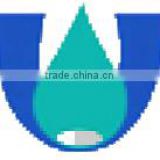portable chlorine dioxide sterilizer generation system
Negotiable /Piece
Min.Order:1 Piece
Quick Details View All >
Nanjing Ligong Shuifu Environmental Protection Technology Co., Ltd.
Product Details
The property of chlorine dioxide makes it ideal for water treatment. Chlorine dioxide oxidizes precursors that cause THM Formation (without forming THMs), destroys phenolic taste and odor compounds, eliminates algae and slime in cooling Towers without interim reactions with ammonia, and possesses superior disinfection qualities for water treatment in food Processing applications.
Market Applications
Municipal Water Treatment - THMs
In drinking water treatment, the most common use for chlorine dioxide is in the prevention of trihalomethane formation, and it has been identified by the U.S. Environmental Protection Agency (EPA) as one of the recommended methods for THM prevention. Typical dosages of 1 to 2 mg/l have been used. In the proposed Disinfection and Disinfection By-product Rule, the EPA is proposing limits on the total of chlorine dioxide, sodium chlorite and sodium chlorate. The exact values of each may vary since the data is still in development. Sodium chlorate is a by-product of the generation reaction and a product of chlorine dioxide decomposition.
The end products of chlorine dioxide oxidation will not react with any subsequent chlorine additions to form THMs.
Phenols
Phenolic compounds are a class of organics in raw water supplies. Their presence is due to either upstream industrial wastes or run-off from decomposed vegetation as in swampy areas. These compounds cause the raw water to have a bad taste and odor. Treatment of phenols with chlorine dioxide produces organics unlike the "classic" phenolic ring compound and pose no trouble with subsequent chlorine treatment. Chlorine dioxide dosages of up to 2 to 3 ppm are used to remove the phenol compounds.
Cooling Tower
Water recirculated in industrial cooling towers tend to absorb ammonia and organic nitrogen compounds among others from the ambient air.Chlorine dioxide does not react with these ammonia or organic ammonia compounds but is specific for the algae and slime that cause poor cooling system operation. The result is reduced dosages and tower clean-up cycles. Typical dosages are 2 to 3 mg/l of chlorine dioxide on a shock basis.
Food Processing
Chlorine dioxide is used effectively in food processing, washing and packaging operation. Cheese and other dairy products, potatoes, vegetables and fruits such as peas, peaches, cherries, etc., are commonly processed using chlorine dioxide.Where foods may carry nitrogen compounds from fertilizing operations or chlorine resistant organisms, such as cysts from the soil, chlorine dioxide has been effectively used in recycled process water at dosage levels of 2 to 3 ppm. As a result, shelf-life is lengthened, disinfectant dosages are reduced, no off tastes are produced, and product quality is improved.
Contact Supplier

You May Like
New Products
Popular Searches
Recommended Products
Find Similar Products By Category